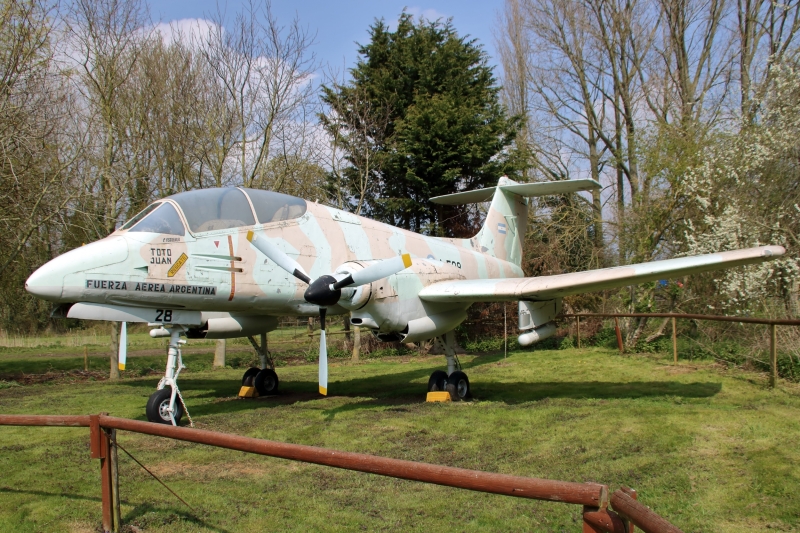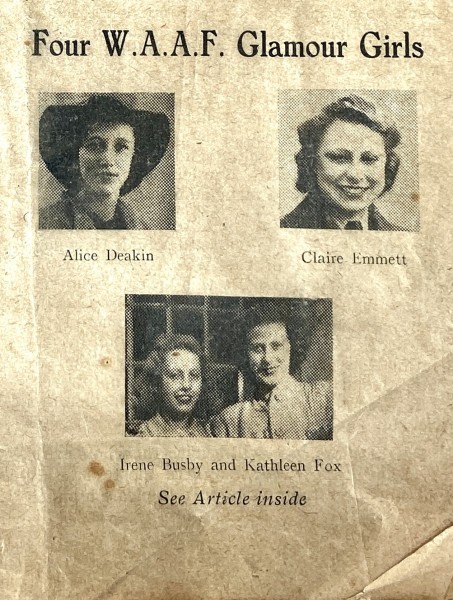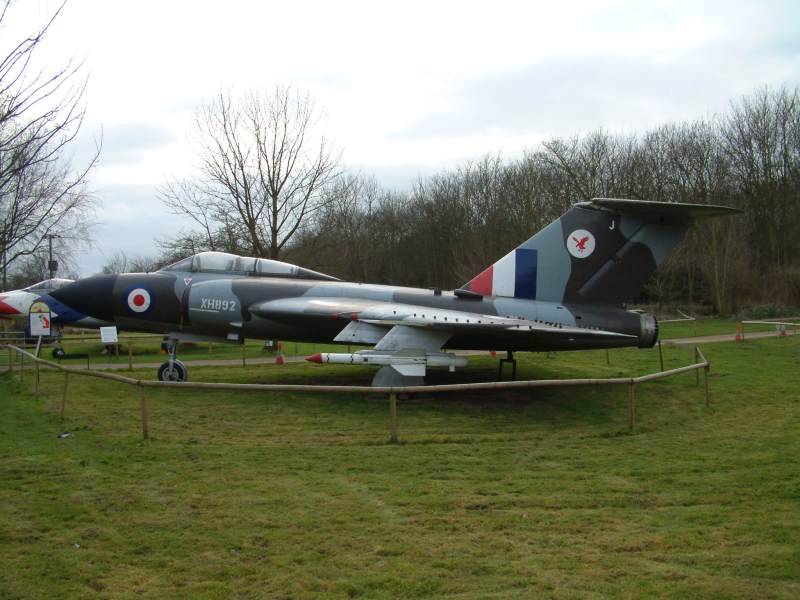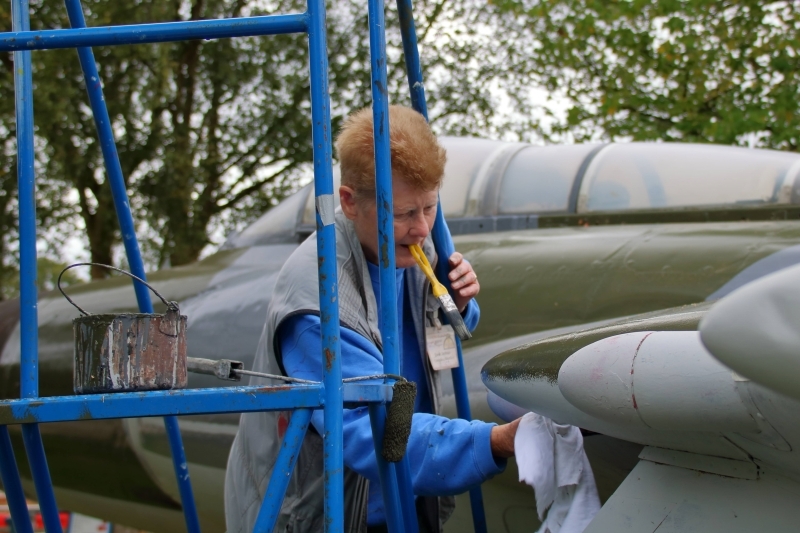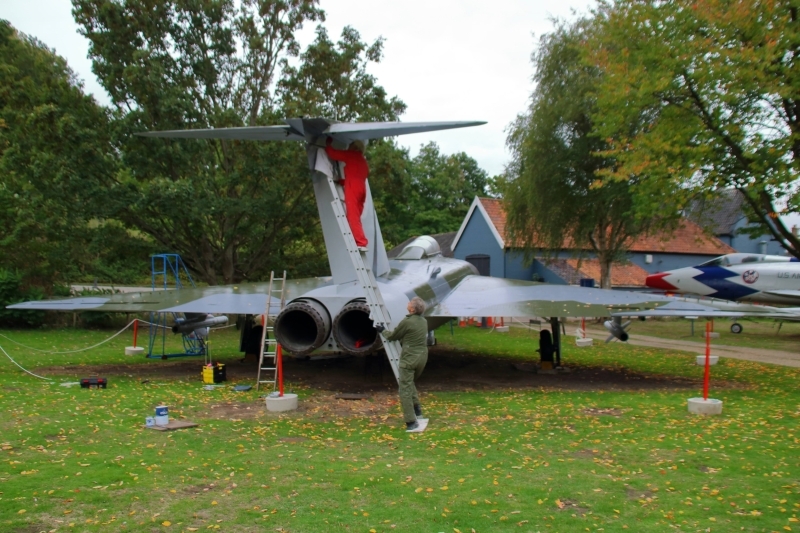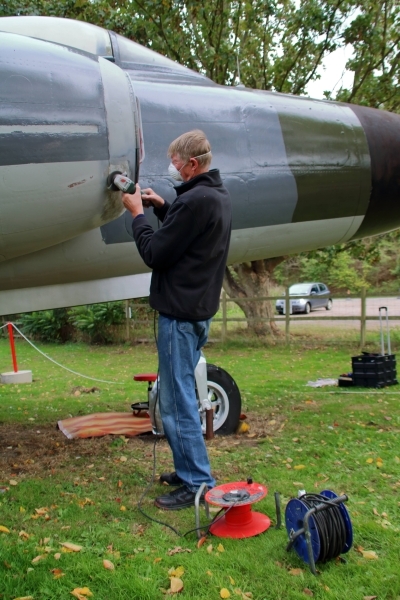NASAM Update as of the 14th Oct 2022
[joli-toc]
From the Chair
Looking Forward to 2023
As our regular and avid readers will know, last winter, we re-arranged the main hangar and the modeller’s den. Both have received a great many compliments, and no complaints, over the summer. With that in mind, we are going to carry on the work this winter.
Firstly, we will seek to tidy up and declutter the Boulton Paul hangar, allowing closer access to some exhibits.
The work in hangar 1 will be extended to the right-hand wall. This will become Luftwaffe Weg bringing together the many Luftwaffe exhibits within the museum. The displaced items will either be moved into Rooms 2 and 3 behind the shop, or sadly some into storage.
Room 3 will be re-arranged to provide three different areas. Roughly half the space will tell the story of Home Defence during World War II. The rest will be split between explaining the history of the British Military Flight Training system and collecting the various personal stories on display into a “reading area”. The area immediately in front of room 3 already contains the Anderson Shelter and 1940s cottage, which relate to Home Defence. These two displays will be thoroughly cleaned, and in the case of the Anderson Shelter, the mural extended.
Room 2 will be updated because of these, and Luftwaffe Weg changes
We have a group of Americans from the Eighth Air Force Association visiting next year, so our final projects are to refurbish the 446BG building and displays and refurbish the 2nd Air Division memorial.
On the negative side, the Pucara is sadly showing the effects of its open deck transfer to the UK as well as the next 40 years on display outside. The port front spar has severely corroded, and the skin is extremely thin in places. We are currently looking
at options for this airframe.
One item that is on everyone’s mind now is energy costs. This is one reason we decided to close from mid-December to mid-January. For the longer term, we are looking at energy-saving options, including the possibility of solar power of some kind.
All in all, a busy winter coming up. We look forward to 2023, welcoming you all back to a revitalised Flixton so you can give us your feedback.
Steve B
General Updates
Firstly in this edition, above, we have an update from Steve B on what the Museum hopes to achieve over the winter months in the reorganisation of various parts of the Museum. This follows on from last winter’s efforts in which great progress was made on reorganising the Modellers Den and the Main Hanger, creating various sections for Open Cockpits, Ejector Seats and the Merlin Display.
Below, we continue with Graham M delving into the archives again and finding articles from the wartime years. Not very “PC” by today’s standards, but they reflect the attitudes and language of the times.
Next up is an article from Peter W …. Whilst on gate duties, he was approached by a visitor who told a tale of our Javelin, not to mention a few other types of aircraft from our collection.
Finally, we have another musically themed entry from the Painters with Barry and the team still finishing of the Javelin in the lower compound.
![]()
A Reminder of the Opening Times
- To the end of October – Wednesday, Saturday and Sunday, 1000 to 1600
- November through to December 14th – Wednesday and Sunday, 1000 to 1500
The Museum will then be closed until Wednesday, 15th February, except for
- Wednesday and Thursday, the 28th and 29th of December, when we are open from 1000 to 1500
Pete S
From the Archives
Slipstream
Throughout the early months of the War, the RAF could be seen to be grappling with many, and varied, challenges. By November of 1941, the Battle of Britain had been fought, the “Few” had been acknowledged, lauded in Parliament and across the country and the war had taken the Boys in Blue around the world to focus on many other fronts. The demands made of the RAF at that time had been met, just, in a number of areas, just as new demands were being made that would take the experiences of the Service in to new territory. One such area of conflict was rather more domestic than might be expected, but no less hotly contested. The Ladies were coming.
Recently recovered from the top of a cupboard during the opening salvoes of the Room 3 clearout are three copies of a wartime Station magazine called ‘Slipstream’. The Station was West Malling in Kent, the magazine was priced at 2d and was printed on typically wartime grade paper, making it something of a miracle that the copies have survived the 81 intervening years at all, let alone on the top of the cupboard. We don’t have a copy of the first issue, which is a real shame, as the ‘Correspondence’ that was printed in the second as a response to the first, indicates a first-rate conflict was brewing.
It seems the WAAFs had arrived at West Malling, and the erks were having a hard time sharing their station with the fairer sex. One gentleman in particular came in for a Very Hard Time.
From Slipstream No2 – Nov 1941 – ‘Correspondence’
Dear Sir,
In reply to LAC (Robert Taylor) Pegler’s edifying article in the first issue of “Slipstream”, I as one of the W.A.A.F.’s so libellously described, would like to have my say.
The worthy storekeeper gives the impression that on the appearance of the W.A A.F.’s at this station the whole personnel turned out in full force to welcome them. As one of the first W.A.A.F.’s to arrive I find this difficult to believe.
If the airmen here show their appreciation and comradeship by a series of wisecracks and rather scornful stares, then LAC Pegler is certainly right when he says, “They went out of their way to make our acquaintance.”
As one who is unfortunate enough to work in the Main Stores with this literary genius, I cannot say that his friendly spirit impresses me, although of course “things have very nearly gone back to normal again”, and no doubt had I met him six weeks ago, the warmth of his welcome and charm of his helpful attitude would have overwhelmed me.
As to the idea of the W.A.A.F.s littering the station, when one thinks that there about 10 men to each girl I suggest that this is a gross exaggeration, although no doubt LAC Pegler finds it a little burdensome at times to be surrounded by so many admiring W.A.A.F ‘s.
It seems a great pity that some of the airmen have had to moderate their language with the advent of the W.A.A.F’s. For my part, I have yet to meet this species who say, “Bless my soul!” or “My goodness ” on having some mishap in their work. If some of the language I had heard since coming to this station has been moderated for my “delicate ears”, I can only be thankful I was not present a few months’ ago when this consideration was not shown.
Furthermore, girls will be girls the whole world over, and the W.A.A.F’s here most certainly will not alter their ways just to please a bunch of uncouth airmen. Incidentally, where would the men be without the women? W.A.A.F.’s are far more conscientious over their tasks than the airmen, and if they were to be put to the test, the quality of their work would, in nine cases out of ten, be much superior to the exhibits produced by the airmen.
Then again we could show the men up at “square-bashing” any day of the week!
To conclude, I would like to convey my appreciation to the M.T section for sending their loftiest and most draughty vehicle to convey the W.A.A.F.’s to and from their billet. Also to thank the airmen for their support of our morning drill.
Yours, etc.,
ACW A. MASSEY
The cover of the magazine bears the photos of four of the WAAF’s on station – but the explanation for their inclusion doesn’t become clear until the last page. The ladies, in response again to LAC Pegler’s literary work, were very clear about the warmth of the welcome they had received and what they thought of the erks who were making their daily lives far more difficult than they felt to be necessary. Eighty years later, we are left to wonder how the Station Commander would have dealt with this situation – and whether LAC Pegler was eventually posted to Benbecular or similar to keep him from inflaming the situation still further.
A Challenge to Airmen!
Dear Sir,
We, the four undersigned W.A.A.F.’s, challenge you to print this letter in your so-called journal.
Many a day we have been forced to march to work through gangs of sniggering airmen who mimic our corporal’s high voice and adopt attitudes of patronizing mirth at our lighter, quicker step.
Did you ever wonder what you look like on the Square, you gorgeous Brylcream Boys? Of course, we realize that it is very early in the morning and you haven’t really had your proper amount of beauty sleep, but the sight of so many round shoulders and the sharp machine gun rattle of an “Order Arms” is rather painful to neat-minded W.A.A.F. personnel.
And so we suggest, in all deference to the “stronger sex” that you should take a little less time with your permanent waves, sneer less at the really excellent drilling of your sisters in uniform, and try to brush up your own deportment and manners.
Yours faithfully,
Four Glamour Girls
Reading the views and thoughts of 1940’s service personnel makes you realise how far we have come – but also how far there still was to go in 1941. As I understand, the Latin motto on the front page of the magazine ‘Ex Nihilo Nihil Fit’ is usually translated as ‘Nothing Comes From Nothing‘ – but in this case, something very definitely was coming. If I can find further episodes in Issues No 3 and No 4, you’ll be the first to know…
Graham M
![]()
A Visitors Story
Peter B’s story – Saturday 1st October 2022.
It’s not often that the stewarding team finds something to post on the blog outside our special events. We turn up, we welcome our visitors, pack up, and go home. It’s a bonus when a visitor turns out to have a service history and associates with one of our exhibits.
This afternoon, with just 45 minutes to closing time, a silver hatchback sped past me on gate duty and disappeared towards the car park. Twenty minutes later, a gentleman stopped to speak with me at the gate and expressed pleasure at seeing our Javelin FAW.9. “Not many left now”, he said, “I used to be involved with them.”
“Ground crew?” I asked. “No, I used to fly them, I was based in Singapore.” The ground did not swallow me up as it should have done, and Peter B now had my full attention. “You’ve got the markings right, 23 Squadron”. Our particular aircraft, XH892 did indeed serve with 23 Squadron briefly in Singapore in the early sixties. Could it be in Peter’s logbook?
Prior to his first flight in a Javelin, Peter had been flying Gnats (second tick on the Flixton inventory). He recalled being horrified at the sheer size of the Javelin and how high the cockpit seemed above the ground after the Gnat. He also confided in the horrible handling characteristics of the Javelin low down when the wings were wet, all too frequent in Singapore’s climate. Caught in high drag, high descent conditions, he explained that the reheat available with the FAW.9 made all the difference to recovery compared with the earlier versions.
Peter’s reminisces switched to his earlier flying career. His first aptitude flight had been in a highly aerobatic Merlin powered Balliol at Cranwell, where he was ‘wrung out’ to assess his potential. His first jet flight was in a Vampire T11 (tick), which Peter had already noted in his quick tour of the museum, and for which he obviously had a lot of affection,” a beautiful aircraft to fly”.
Peter had done plenty of hours being shipped about in Valettas (tick), albeit in the ‘canvas seats’ nothing like the relative luxury of our C2.
We moved on to Lightnings. Peter had trained on T5s, converted solo on the F.3 (tick) and then served in Germany on F2As. “Had to eject from one of those” he mentioned, in passing. I dragged the conversation back to that event. He was at 15,000 feet pair flying somewhere over Germany when even through the flying helmet he heard a tinny sound behind him and “eight cherries (red warning lights) lit up”. “Are you feeling hot?” called the other pilot. “No”. “You should be, you are pouring out smoke and flames.” Peter’s Number 1 (lower) engine had shed blades and caught fire.
Our Lightning patter notes explain that the Mark 4B ejection seat fitted to the Lightning had a nasty reputation for causing spinal injuries due to its short gun length and high separation velocity needed to clear that tall fin. Our patter notes are coming to life in front of me. Peter suffered significant spinal injury and spent six months in rehabilitation in hospital before being cleared for a return to flying.
The last aircraft Peter mentioned, nodding towards our specimen, was the Phantom (tick). “Lovely aircraft to fly” he said, ” but too busy. Did you know it had eight different buzzer sounds? Even the missiles talk to you. Dreadful.”
By now it is well past 4:00pm, but “sorry we’re closed” just wasn’t the right thing. Gary had joined me at the gate wondering what was happening and soon got pulled into listening. No, Peter hasn’t ever considered writing any of this down. Others he thinks have already done a good job of it. We begged to differ, and asked if he might consider writing to us with any anecdotes that would help bring our exhibits to life. He took away our leaflet with web addresses and was going back to Devon, heading south tomorrow and unlikely to return.
If only …..
A public day to remember, bless him.
Peter W
![]()
Painters Update
4/10/22 – If (de)leafing you was easy…!
Regular readers of the Paint Team blog (are there any? – Ed.) may have picked up on my penchant for a music-derived pun in my weekly blog headline. So, this week I offer you a top hit from Mr Phil Collins. How is this relevant? Well, on a dry but very windy day, the team tried to crack on with the topcoat camouflage on the Javelin. Only to be regularly interrupted by gusts of leaves being blown onto the surfaces to be painted and, more worryingly, the surfaces that had just been painted! Quel dommage! Anyways, the team persevered with Cliff assigned to Vortex Generator painting duty on the port wing (see Javelin Repaint 50 pic) and Gwen cutting in the waistline between the upper (camo) and lower (silver) port wing surfaces (see Javelin Repaint 51 pic). Meanwhile, down at the rear, the tag team of Mark and Ian focused on the tail and the elevators (see Javelin Repaint 52 pic).
Also, during the day, Barry rocked up late morning, having spent a couple of hours over at EPS going through the Decals Spec for the Whirlwind. Workshop Roger also swung by to finish off the foam and fibreglass repairs to the Javelin’s engine intakes. After a bit of sanding back (see Javelin Repaint 53 pic), Roger exited stage left, leaving Barry to re-prime the repaired intakes (see Javelin Repaint 54 pic), ready for paint next week. Barry also found a bit of time to paint up the fiddly bits in and around the nosewheel in silver.
Barry
(Photos) Painters Update
The Repeat Info
The repeat information is still here I’m afraid, and I make no apologies for keeping his section in our blog. We are a charitable organisation relying on monies from the public to keep us going. Any help we receive is gratefully accepted and enables the museum to continue in our mission “To conserve, preserve and promote the history of aviation in East Anglia, whilst providing a fun, family-friendly and interactive museum, promoting education and remembrance of the events of the past“.
Are you thinking of helping ??
 We obtain most of our finances by donations and by membership fees. We save money by having a dedicated group of volunteers that keep the museum and the exhibits both manned and maintained. We hope therefore a few people may consider helping in the ways below.
We obtain most of our finances by donations and by membership fees. We save money by having a dedicated group of volunteers that keep the museum and the exhibits both manned and maintained. We hope therefore a few people may consider helping in the ways below.
There are three easy ways to help: Help by becoming a Museum Member, also by Volunteering to help at the museum, or by Donating to assist in our running costs. Please click on the appropriate button below to access the appropriate information:
Keep Up To Date
![]() To keep up to date with further information, please keep an eye on our Social Media (see the Social Media buttons at the foot of this blog) or click on the button below to be notified by email of any upcoming changes by seeing the latest blog.
To keep up to date with further information, please keep an eye on our Social Media (see the Social Media buttons at the foot of this blog) or click on the button below to be notified by email of any upcoming changes by seeing the latest blog.

